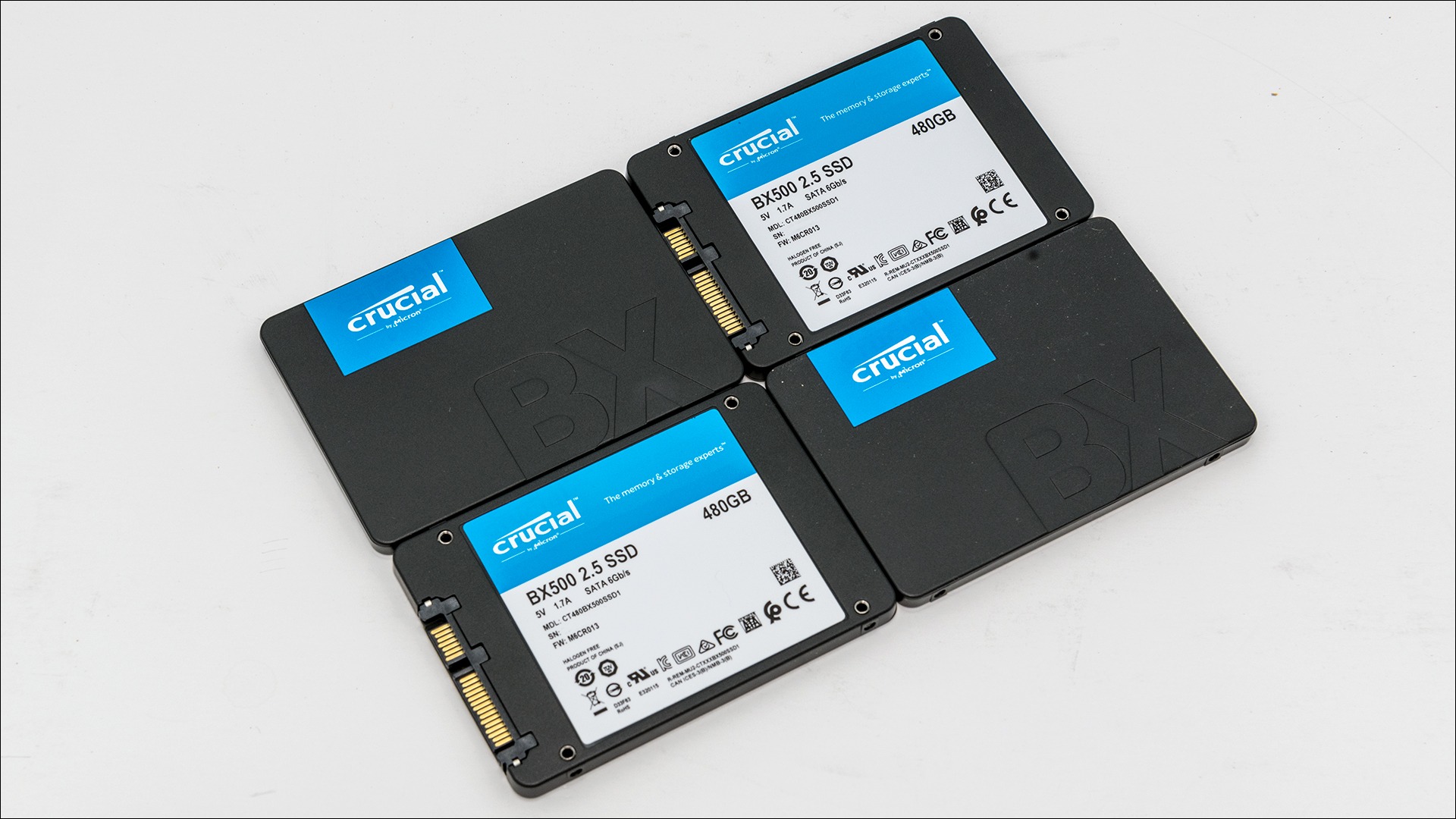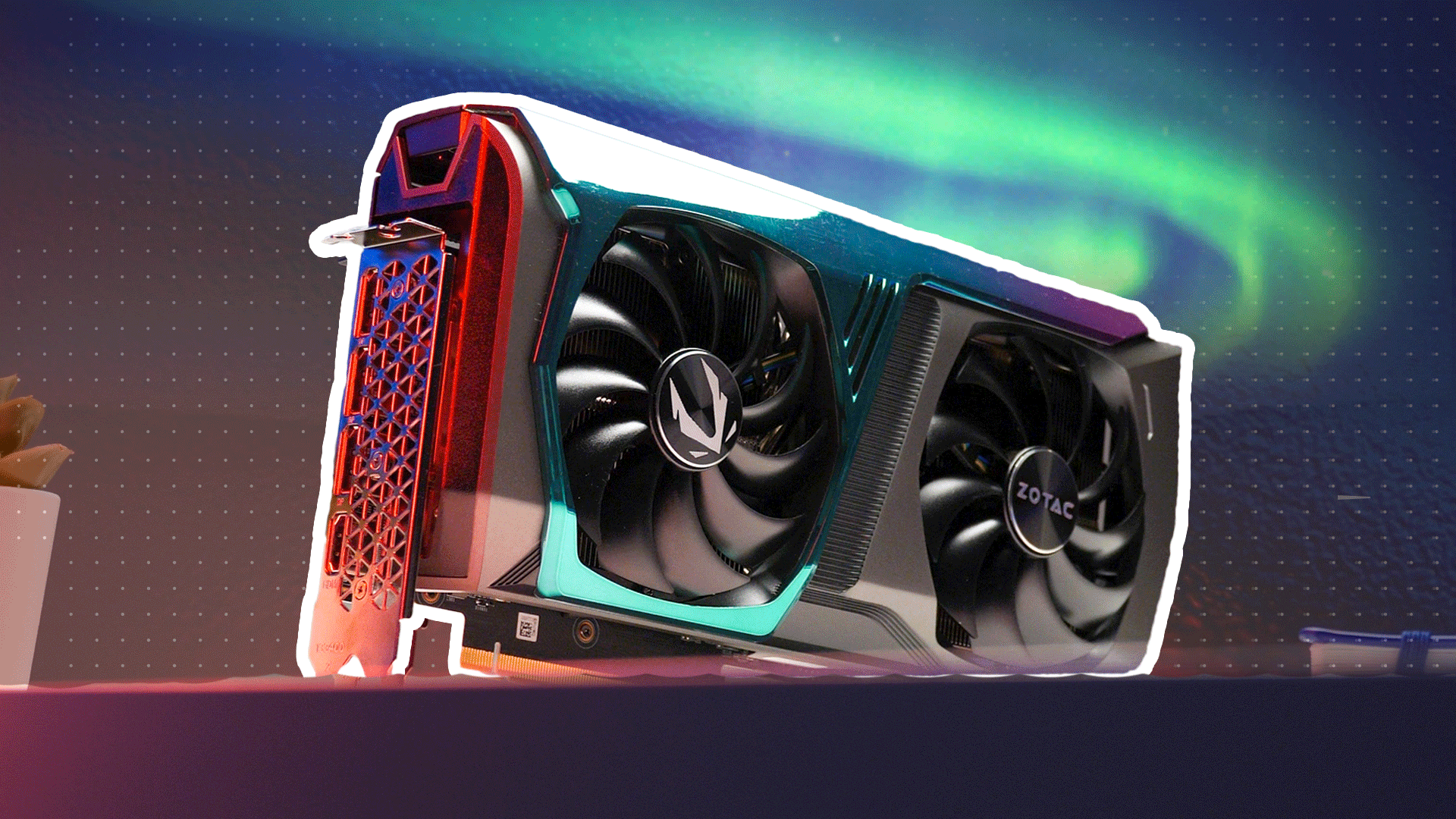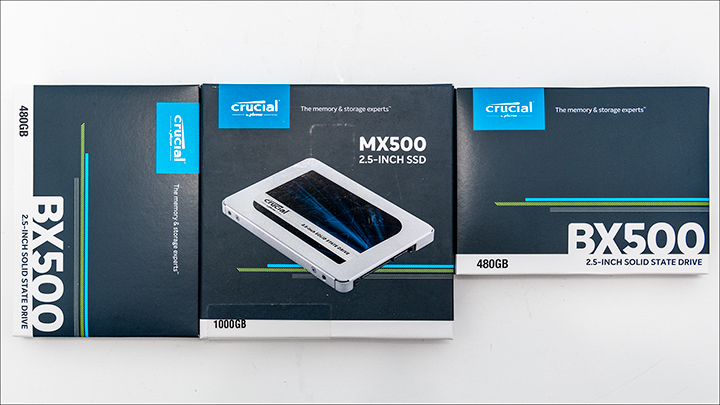
As first impressions go the shipping container Crucial has opted for is eyebrow raising. Instead of the same thick cardboard box with internal clamshell protector we were expecting Crucial has opted for a smaller, thinner paper sleeve with internal clamshell protector.
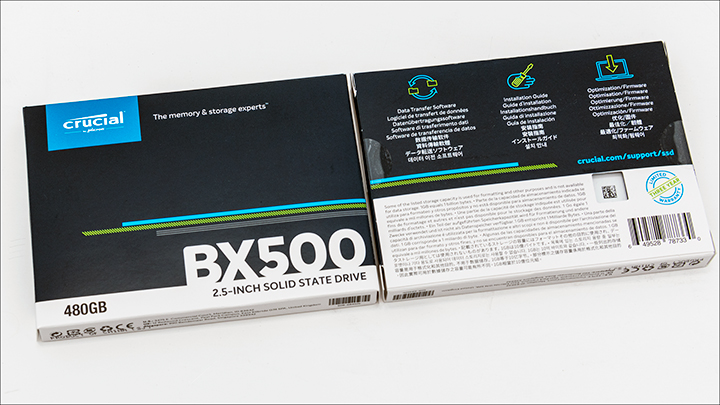
We have zero issues with the reduction in size – and as you can see it is smaller, rather we are unsure why Crucial felt the need to change to this new design. It gets the job done but that is not the same as saying it is optimal. By the same token this protective configuration is still above average for its intended market. Remember this drive is a value orientated model that has to compete against mostly god awful models. As such we are inclined to give it a pass… as it still is ‘good enough’. It is however the first hint that the BX500 is not intended to be a BX300 2.0. Instead it has been designed to outcompete the rest of the value market, not outcompete the MX500 on value. That is a fine distinction but this design philosophy does have a large impact on performance and even value.

This is further underscored by the accessories included. Crucial does not include the 2.5mm adapter that allows 7mm z-height SSD to be used in devices that can only accommodate 9.5mm devices. They do however include a cut-down Acronis Ti application for making it easier to transfer existing drive data to a new one. Please keep this design philosophy in mind as we continue our inspection of this new Crucial model.

The chassis itself has also undergone a rather significant sea change. The last generation BX model used an all metal chassis that could not only protect the delicate(ish) internals but could act as a heatsink for those selfsame components. The BX500 on the other hand sees a return of plastic cases. This is a significant down-grade. Plastic bends, shatters, and generally will not take the abuse that a metal case can routinely shrug off. Of course, if you are that cavalier with your solid-state drives… you have bigger issues to deal with. On the gripping-hand… we all have dropped a drive during installation. It happens. If you drop this drive, and Mister Murphy is there ‘helping’ you, there is the possibility of internal damage. This plastic case will still bend in far enough to easily transfer the shock to the small PCB housed inside.
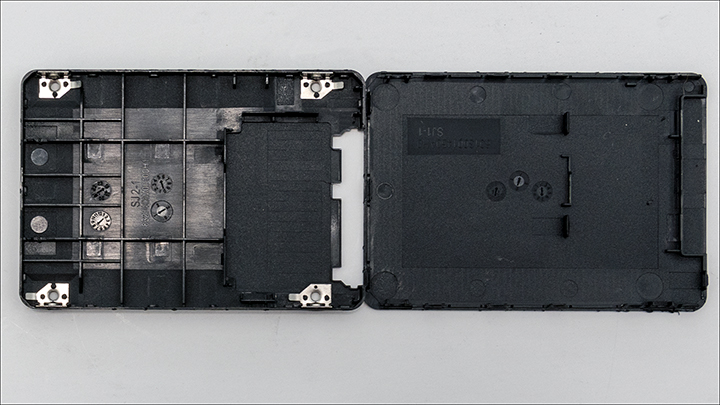
We say ‘still’ as Crucial actually has thought about this and taken pains to reduce the likelihood of it happening. The most obvious of these tweaks is the numerous ridges that run along in the internal sides of each half of the case. This does reduce bending. It does not eliminate it as these ridges are only in the empty sections of the chassis – meaning bending over the PCB is still possible. Also important is Crucial has included metal reinforcement tabs around the screw holes. What this means is that your PC case mounting screws will not be going into plastic, rather metal (just as with a metal clad SSD). This is important to note as we have stripped out these mounting holes in other plastic clad SSDs. Which is never a fun experience.

To us the change in material is not concerning because of physical damage, rather it because it lacks cooling abilities. NAND and the controller do create waste heat. All electronics do. This heat cannot be transferred to the exterior of BX500’s case and rather will be trapped inside further raising NAND temperatures. Thermo-plastic is just not good at handling heat and this is why the internal PCB lacks heat pads connecting the various components to the case. This means there is no way for the BX500 to whisk heat away using internal PC case airflow (like metal clad SSDs can). This is not all that surprising when compared to similarly priced models, as many in this price range that do use a metal chassis… usually do not include enough heat pads to actually use the metal case as an effective heatsink. Basically the ‘market has spoken’ and the price of the drive is more important to value than durability or robustness. It is what it is. Most value buyers will not stress the NAND enough for their built-in thermal limiters to kick in. Making it almost a non-issue for true value orientated buyers. It will be an issue for those who opted for the BX300 over the MX500 because of performance… and will all but eliminate it from future consideration. This is a shame and will reduce the likelihood of this becoming a ‘cult classic’ of epic proportions like the BX300 series was.
Hopefully by the time the BX500’s replacement arrives some sanity will have returned to the market. In the mean time if plastic is a deal-breaker the BX500 is not the drive for you. We personally think that as long as the drive is a good enough deal… we can mitigate most of the issues associated with a plastic chassis and overlook it. We say this as this plastic chassis is not the typical plastic chassis. It actually is about as good as you can get with plastic. So don’t just write-off the BX500 without thinking long and hard about how you plan to use it.
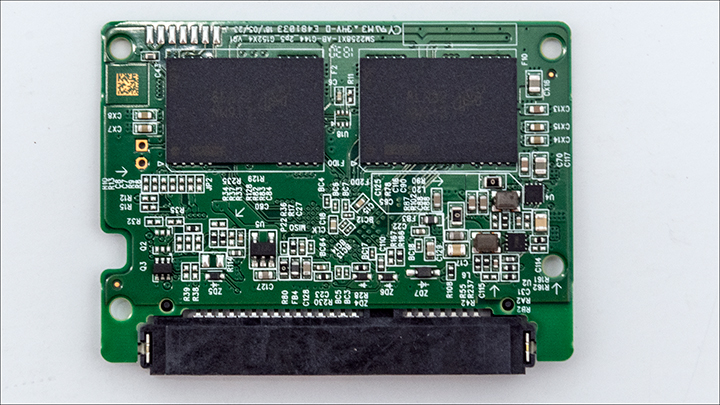
Moving on. The components themselves have also changed. Maybe even more radically than the change to plastic. The BX300 used first gen ‘3D’ MLC NAND combined with a SMI 2258H controller paired with a large external RAM cache. This combination was arguably superior to the TLC based MX300… and why many enthusiasts purchased the BX300 instead of the MX300. These people will not be happy with the BX500. The BX500 uses very similar 3D TLC NAND that the MX500 uses. This change means there will be almost no difference in potential performance between the MX and BX series.
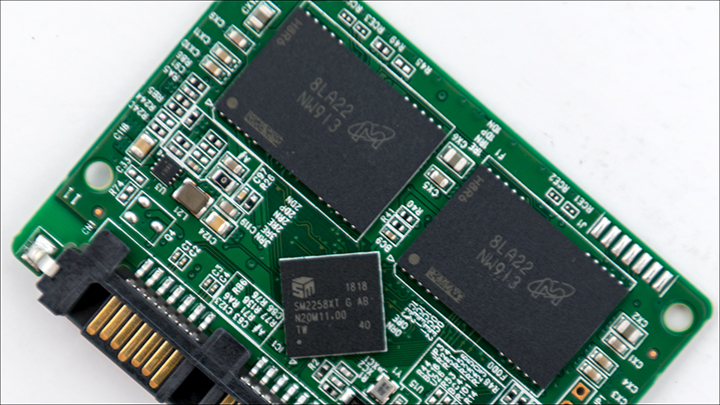
This actually is a non-issue as the BX500 does not use as potent a controller as the BX300. Instead of being paired with the still rather good SMI 2258H, it uses the newer SMI 2258XT controller. This controller is indeed newer than the 2258H but it is not as powerful. The most noticeable difference is the fact that it is DRAM-less. Instead of being able to push I/O requests into an external cache when things get hot and heavy… the 2258XT variant will simply start to slow down. It will not ‘stutter’, unless you push it really hard, but IOPS will stall and hit a ‘wall’. This will be most noticeable during small-file I/O requests… and why Crucial does not even publish ‘4K’ performance numbers. Basically, the new XT variant was purpose built to be a cheaper option compared to their 2258H controller. Not ‘better’.
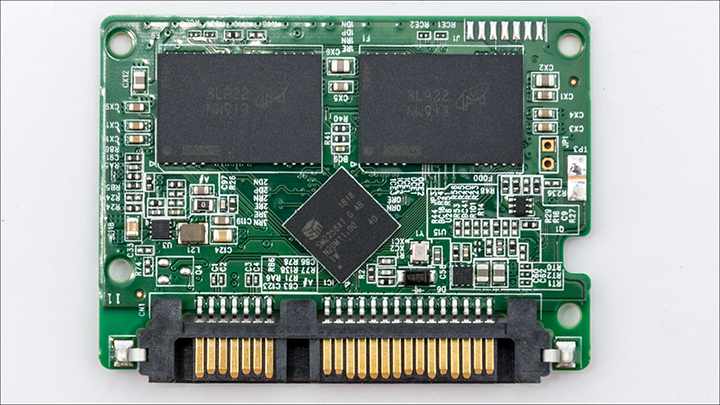
With all that said, this drive is not designed to compete with the MX500 or even the BX300. It is meant for entry-level ‘cost is the only thing I care about’ buyers who will not be using the PC/laptop/etc. hard or long enough to notice this difference. They may even be looking at their first solid-state drive and replacing a 5-7.2K rpm hard disk-drive. Once again this will be disappointing to people who were hoping for a BX300 2.0 but is still decent for its class.
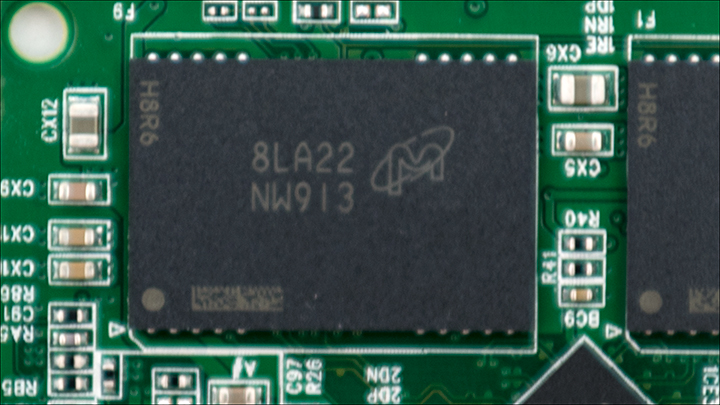
As we will show later in this review there is one area that the BX500 maybe a more optimal solution than the BX300 or MX500. That is in RAID configurations. In such configurations, the more controllers (even lower performance controllers), the more NAND, the more space you can get for a given budget… the better the RAID array will perform. This drive is 20percent cheaper than the MX500. This is where things get interesting to say the least. A good example of what this difference in price actually translates to is that a single MX500 2TB drive will set buyers back 390 (US) dollars. Four of these BX500 480GB’ers will cost $320 (USD), offer nearly the same total capacity (1.92TB vs 2.0TB) and for only ten dollars more enthusiasts can get five of them. Keep this comparison firmly in mind when we go over the performance in RAID configurations the BX500 480GB offers. This is a dollar to dollar comparison. Of course, we will draw conclusions based on 1 drive vs 1 drive configurations as well – as not everyone will want to go the RAID route. Depending on your specific needs one or the other will more valid for you. It is simply our job to give you all the data we can so you can make an informed decision.
